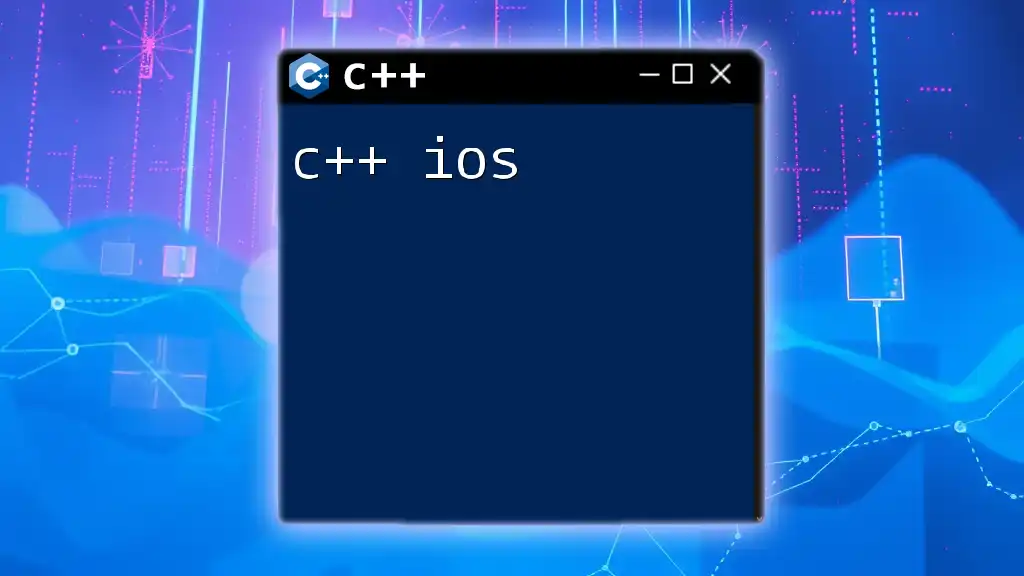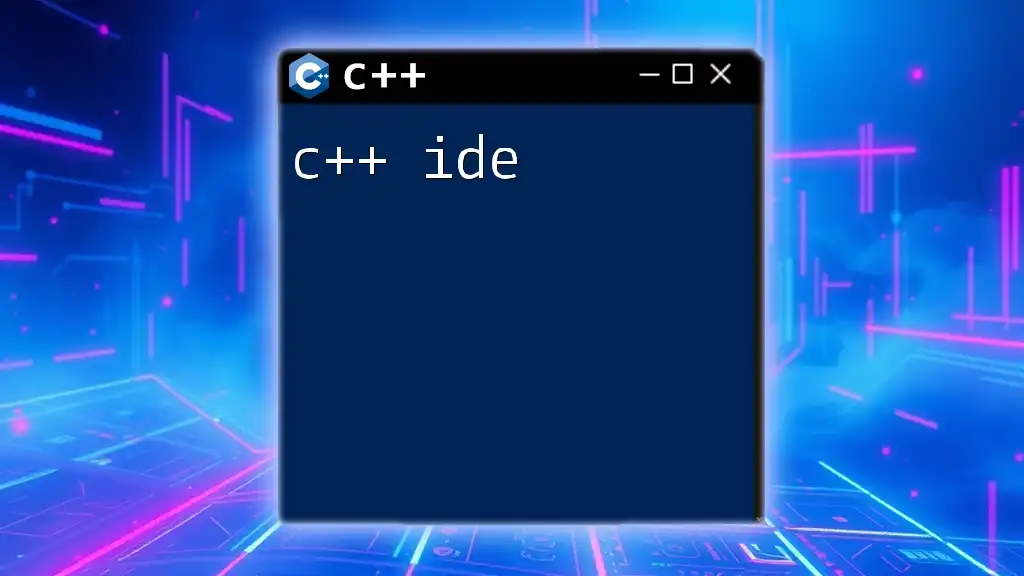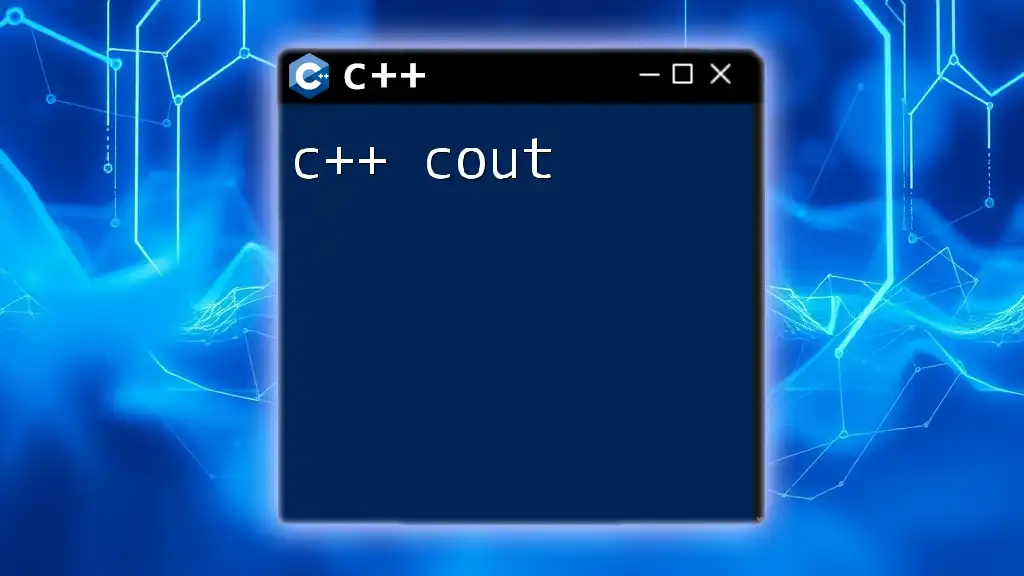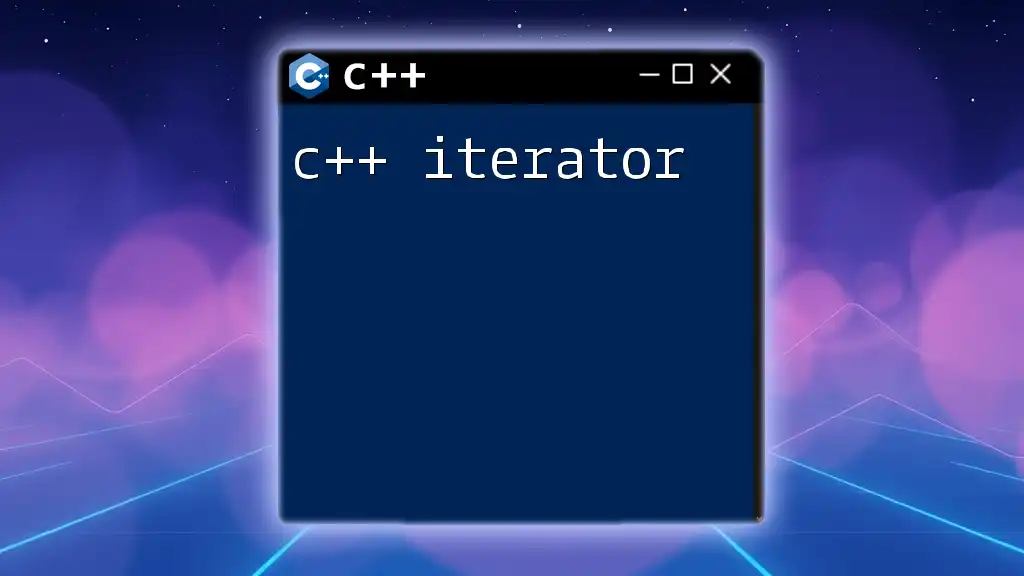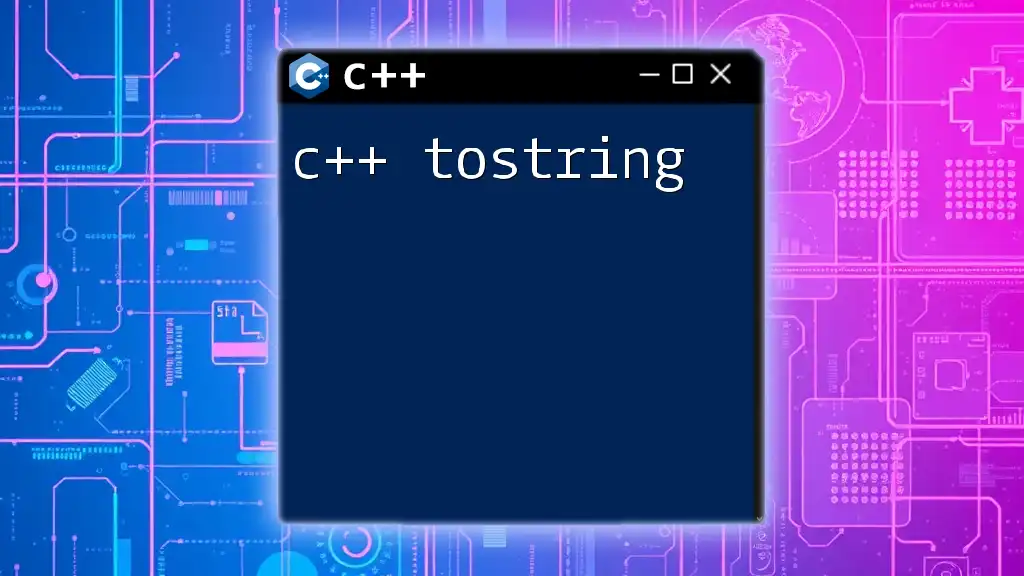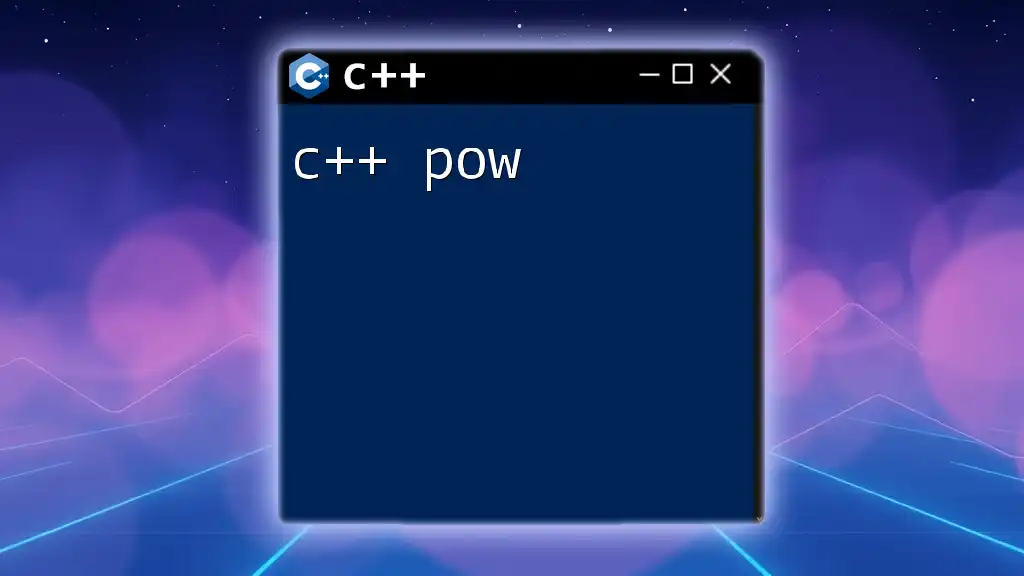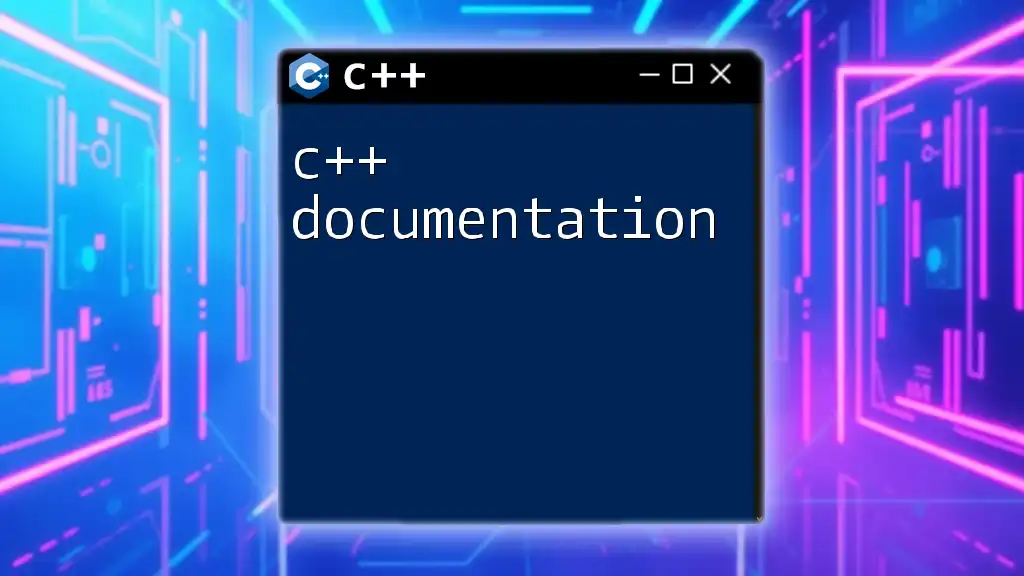C++ I/O (Input/Output) operations allow you to read data from standard input and write data to standard output, using libraries like `<iostream>` for console interactions.
Here's a simple example of using C++ I/O:
#include <iostream>
int main() {
std::cout << "Hello, World!" << std::endl; // Output to console
return 0;
}
C++ I/O: A Comprehensive Guide
Understanding Input and Output in C++
In C++, I/O (Input and Output) is crucial for interacting with users or other systems. It enables programs to receive data (input) and produce results (output), making it a fundamental aspect of all applications. Efficient I/O can significantly enhance user experience and program performance.
The I/O Streams: Overview
Streams in C++ act as an abstraction layer that represents input and output operations. There are mainly two types of I/O streams: input streams and output streams. Input streams read data from sources like the keyboard or files, while output streams send data to destinations like the console or files.
Standard Streams in C++
The most commonly used standard I/O streams in C++ are `cin` and `cout`. The `cin` stream is used for standard input, while `cout` is used for standard output. They provide a simple and efficient way to handle I/O operations in C++.
Here is a basic example of using `cout` to display output:
#include <iostream>
using namespace std;
int main() {
cout << "Hello, World!" << endl;
return 0;
}
When you run this program, it will output "Hello, World!" to the console, showcasing a simple output operation.
Using the iostream Library
To perform I/O operations in C++, you must include the `<iostream>` header file, which contains the definitions of `cin` and `cout`. It’s also essential to specify the `std` namespace unless you're using the `using namespace std;` directive.
Input Operations in C++
Reading input in C++ is primarily done using the `cin` stream. The basic syntax for using `cin` allows you to interpret user entries effectively, handling various data types straightforwardly.
When using `cin`, you can read integers, floating-point numbers, and strings. Here's how you can read an integer value:
int number;
cout << "Enter a number: ";
cin >> number;
This code prompts the user for a number and stores the input in the variable `number`. It is essential to validate and handle any potential errors in input, which can arise if the user enters an invalid type.
Handling input for different data types requires a good understanding of how `cin` interacts with each type. For example, with string input, it's good practice to use `getline()` to capture the entire line:
string fullName;
cout << "Enter your full name: ";
getline(cin, fullName);
This approach captures spaces within the full name, which would otherwise be truncated by the standard `cin` method.
Output Operations in C++
Output in C++ is managed predominantly through the `cout` stream. Basic outputs involve using the `<<` operator to send data to the console. The `<<` operator can be chained to output multiple variables or strings in one statement. For example:
cout << "Number: " << number << endl;
In this instance, the program outputs the value stored in `number` along with a descriptive text. The `endl` manipulator not only adds a new line but also flushes the output buffer, ensuring immediate display.
To manipulate the formatting of outputs, C++ provides several stream manipulators. For instance, using `setw()` allows you to define the width of the output field, while `setprecision()` can be used to control the number of decimal places for floating-point numbers:
#include <iomanip>
double pi = 3.14159;
cout << fixed << setprecision(2) << pi << endl; // Outputs: 3.14
Such formatting options are essential for creating user-friendly displays.
Error Handling and Stream State
Understanding stream states is crucial for creating robust I/O operations. C++ provides several states, including good, fail, bad, and end-of-file (eof). Knowing these states can help diagnose issues in input operations.
To check for errors in input, you can use methods such as `cin.fail()`, which returns true if the last input operation failed, and `cin.clear()`, which resets the stream state. An illustrative example:
if (cin.fail()) {
cin.clear(); // Clears the error state
cin.ignore(numeric_limits<streamsize>::max(), '\n'); // Discards invalid input
}
This code is useful for preventing your program from crashing when a user inadvertently enters an incorrect type.
File I/O in C++
File I/O introduces another level of input and output, allowing data to persist beyond program execution. In C++, the file streams `ifstream` for input and `ofstream` for output facilitate this.
To read from a file, you first open it, ensuring to check if the file successfully opened:
ifstream inputFile("data.txt");
if (inputFile.is_open()) {
string line;
while (getline(inputFile, line)) {
cout << line << endl;
}
inputFile.close();
}
This example demonstrates how to read each line from a text file and print it to the console. If the file isn't opened properly, ensure to handle the error accordingly to inform the user.
To write data to a file, use the `ofstream` class like this:
ofstream outputFile("output.txt");
if (outputFile.is_open()) {
outputFile << "This is a test." << endl;
outputFile.close();
}
This snippet creates or opens `output.txt` and writes a line of text to it.
Best Practices for C++ I/O
To enhance the performance and reliability of C++ I/O, consider a few best practices. Firstly, familiarize yourself with options to synchronize and unsynchronize streams based on your performance needs. Unsynchronized streams can speed up I/O operations, but they may lead to data inconsistency in multithreaded environments.
Also, avoid common pitfalls such as neglecting to check whether a file has been successfully opened before proceeding with read or write operations, which can lead to runtime errors.
Recap of Key Points in C++ I/O
Understanding C++ I/O is crucial for effective programming. This guide has covered the fundamentals of input and output operations, including standard streams, error handling, and file I/O functionality. By honing your skills in these areas, you can ensure your programs are user-friendly and efficient.
Further Resources
To deepen your understanding of C++ I/O, explore recommended materials such as books on C++ development and online tutorials focusing on advanced programming techniques. Remember, practice is key to becoming proficient in handling I/O with C++.








